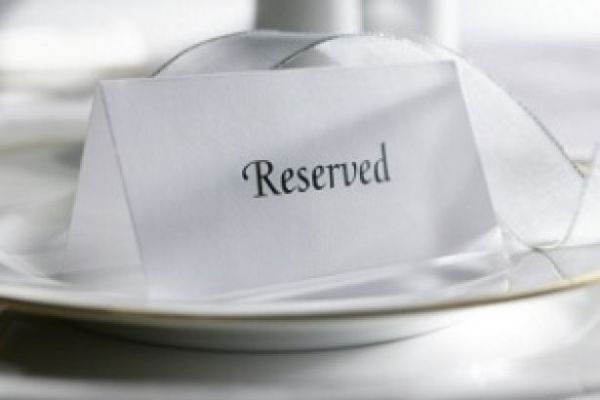A decade ago, you wouldn't have heard too many people brag about traveling to Copenhagen for the food unless they were on stage doing stand-up.
Now, of course, the game has changed. The unofficial statistic around the city is that one in three tourists is there to eat. The restaurant at the top of everyone’s wish list is Noma, an almost impossible dream. (Even before it announced that it was closing at the end of the year, Noma averaged 20,000 calls on the one day each month that it takes reservations.)
Still, if you visited Copenhagen in the past few years, you know that the worldwide obsession with Noma and the New Nordic cooking style it helped champion—hyper-seasonal simple (if sometimes off-beat) ingredients, foraging, etc.—has had a downside.
Especially if you were eating in the city for more than a few days and had only a limited appetite for pickled vegetable tops and burnt grains. Food that’s delicious and intriguing for a couple of meals becomes very one note after a while, and you start badly wishing that someone would open up a good Szechuan spot or even a hot sauce stand. And when even bath soaps start using the "New Nordic" label, well, that's a trend that's run its course.
Which is why a September visit to Copenhagen yielded some pleasant surprises. More diverse cuisine is around town now, from elaborate Japanese breakfasts to incredible late-night pizzas topped with just-made mozzarella. Noma itself is evolving. When it reopens in its new location in 2017, in a hippy district with a farm, chef and owner Rene Redzepi promises a different focus. His mantra is hyper-seasonality: He’s dividing the year into three distinct food seasons, not the four we’ve all been brought up to believe in and shop for. Instead, there will be a seafood-focused winter; produce for spring and summer; and a hunting menu for fall.
Here are eight terrific places to eat and drink around Copenhagen now.
Kadeau Copenhagen
The original location of this astonishing restaurant is on Denmark's Bornholm island, a little hotspot near Sweden frequently described as the Montauk of Scandinavia. (“You have to visit,” locals will scream at you if you mention Bornholm.) Here at the recently relocated, five-year-old Copenhagen outpost, a battery of chefs work in the wide-open kitchen and take turns delivering such dishes as a side of salmon that's been both cold- and hot-smoked, served with pickled figs and cherry blossom vinaigrette. King crab comes with fresh walnuts and fruit juice made with “all the berries we can find,” finished with a butter sauce.
The 18-course prix fixe menu is about $350; the wine pairings are an extra $200. You can choose juice pairings for about $100, or, best of all, have them interspersed with wine and beer throughout the meal.
Admiralgade 26
Wine drinkers around the world adore Ved Stranden 10. The place has no wine list; instead the staff will help you figure out what wine(s) you want to be drinking and set an open bottle down in front of you. Recently, the owners opened a restaurant around the corner that looks like a groovy, uncrowded Scandinavian furniture shop. At dinner, the menu features non-Scandi staples such as bouillabaisse and steak with smoked bone marrow vinaigrette. In the morning there’s a savory Japanese breakfast with enough little plates and bowls to fill the table, including miso soup, cured mackerel and rice, and chawanmushi egg custard, plus fortifying green juice and coffee.
BronnumCopenhagen has one of the best cocktail bars in Europe; it's called Ruby. (If you’re looking for Noma cooks after hours, you might well find them here.) Bronnum is the brand new spot from the Ruby team, and it's even grander, a series of six distinct rooms set in a building across from the Royal Theatre that was once a restaurant frequented by Hans Christian Anderson. Bronnum's ambitious 24-drink menu includes the "3 Martini Lunch," a flight of drinks that shows the evolution of the classic from sweet to bone dry, and the aquavit-based Memories of Aalborg, served with a nugget of cheese and hazelnuts that complement its flavors. There’s also a cellar full of Champagne, with Dom Perignon 2006 poured by the glass.
Baest
108It’s been billed as the more casual incarnation of Noma restaurant without Rene Redzepi in the kitchen; he's merely the co-owner now, with one of his former chefs, Kristian Baumann, doing the cooking. Some of the ingredients come from Noma’s kitchen, a block away, but the place has its very own sensibility, with deceptively simple dishes. In a recent review, Bloomberg critic Richard Vines shouted out the raw lamb with last year’s pickles, which he described as "Nordic steak tartare." Vines also liked the braised oxtail, glazed with fermented barley. In fact, Vines says, “The great thing is that 108 doesn’t feel second-best. In fact, the buzzy dining room is more fun than at Noma.”
Torvehallerne Street Food MarketAs if your weekly greenmarket mated with an internationally minded Eataly, this five-year-old foodie destination in central Copenhagen has a terrific mix of 60 stands (not unlike the new Claus Meyer food hall in New York's Grand Central Station). In the outdoor plaza, Hija de Sanchez, run by Noma’s ex pastry chef Rosio Sanchez, has a short menu that usually stars carnitas tacos on fresh tortillas. Within the two glass-walled halls, among the cheese and butcher and produce stands, are prepared food kiosks, such as Hallernes Smørrebrød, which specialize in glorious open-faced sandwiches topped with thick slices of smoked salmon and beef tartare. And in one corner is an outpost of the Coffee Collective, whose espresso-topped soft serve has a cult following.
SpuntinoThis two-story modern Italian restaurant has been open for a while, but a recent renovation also brought on a rising star chef, Nick Curtin (from Rosette in New York). His lovely dishes include imported buratta with vibrant purple plums and pickled onions; handcut beef tartare with hazelnut oil, burnt lemon, and smoke; and spaghetti alla chitarra with brown butter and trout roe. (Take note: Copenhagen doesn’t have a ton of great pasta.) The short wine list focuses on Italy with a little France and includes some orange wine, too. Spuntino’s five-course menu is less than $50, which constitutes a bargain in Denmark.
News by Bloomberg, edited by Hospitality Ireland









